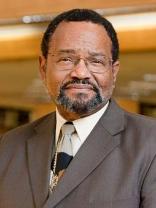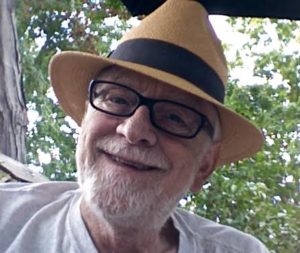By Robert R. Thomas
 Seemingly different as their backgrounds, Beecher black pride and Northside Chicago white privilege, Artina Sadler and Tracie Kim share a common passion for social justice. They teach a course titled “Cultural Competence in Health Care” at UM-Flint where they have been teaching colleagues for 11 years. They have become friends.
Seemingly different as their backgrounds, Beecher black pride and Northside Chicago white privilege, Artina Sadler and Tracie Kim share a common passion for social justice. They teach a course titled “Cultural Competence in Health Care” at UM-Flint where they have been teaching colleagues for 11 years. They have become friends.
In conversation with each other and an audience of 25 at the Flint Public Library May 25, they traced their individual journeys to becoming friends and how their mutual goal of social justice has been affected by their friendship and how the friendship has deepened their commitment to social justice.
“So how can the dynamics of a cross-racial friendship move us forward for social change? That’s really the crux of what we’re getting at tonight,” Kim said.

Tendaji Ganges
The conversation was a continuation of the Tendaji Talks sponsored by Neighborhoods Without Borders. Tendaji W. Ganges (1948 – 2015) was one of the cofounders of NWB, whose goal is dismantling systemic and institutional racism. The talks commemorate his life and work.
Sadler and Kim are all about outing systemic and institutional racism. But despite their common interest in social justice, the path through a cross-racial, cross-cultural friendship was rocky.
“It was anything but an organic process,” said Kim. “There were no rules to this road.”
Sadler talked about the need to share our stories, but, she said, you have to “tell the truth when you tell your stories. That is what is necessary. If you don’t understand where I’m coming from, that’s a problem.”
Kim said she came to understand that “in a cross-racial relationship, trust is definitely not given; it’s not automatic. It’s earned. And it’s earned over time. You have to keep coming back to the table. You have to be willing to change.”
Both women praised the power of a cross-racial friendship because it empowers a change that exposes and destroys the Big Lie, they said, that whites are the superior people, a lie that remains very much alive and kicking in racially- and -culturally-divided America.
“Because the lie lives on,” Kim said, “we tend to live in fear. We might not acknowledge this fear, but the fear can take many forms. There’s a palpable fear when people in Grand Blanc think about coming to Flint, into those neighborhoods. The fear that people of color will take our jobs, our security, and even rob us of our nostalgic way of life.”
But the fear for whites is temporary, Kim said, because they can escape their racism under the systemic umbrella of the Big Lie.
Black fear is different, Sadler said. “Can I be honest with a white person and what are the consequences? What is the risk? Racial protection is minimal. Black fear is seen as trying to be white.”
One of Kim’s most difficult hurdles in her friendship with Sadler. she said, was the dismantling of her white blindness by Sadler’s black perspective and history.
“History provides foundations for good relationships needed in advance to support social justice work,” Sadler said. “The intersection of history and self-awareness is where social justice work begins. If you don’t understand history, you are not going to be able to actually structure yourself so you can move forward.
“When people of color don’t know about history, we don’t have context for why we see things the way we do. It makes us prone to see things as personal instead of relational,” she said.
“So, it’s not just a system of racism, it’s me. And when we don’t understand history, we don’t see the connectivity between the things that happened then and the things that happen now. And that is detrimental to us. We grow isolated and self-destructive and self-defeating. We hurt ourselves and our families, reinforcing and passing on the stereotypes that have constrained us. History is important for everybody.”
For Kim, “hearing the real stories” created an even bigger fear. “Exchanging perspectives is a scary place to be because you don’t know what replaces it.”
As for disappointment, Kim said she echoed many of her students of white privilege in stating, “We feel as if we’ve been lied to about life.”
Cognitive dissonance often results from such cultural shock, Kim said. But she and Sadler persevered because they kept coming back to the table.
Kim recommended “a really, really good book for white people” by Robin D’Angelo, What Does It Mean to Be White.
The book explores the “the fragility of whiteness,” defined as “a state in which even a minimum amount of racial stress becomes intolerable, triggering a range of defensive moves. These moves include emotions like anger, fear, guilt and behaviors like argumentation, silence and leaving the stress-inducing situation. These behaviors, in turn, reinstate white racial equilibrium.”
Paraphrasing something she had hear from Tendaji Ganges, Sadler said, “Oppression is a double-edged sword; you cannot wield it without being cut yourself.
“White fragility is the consequence of white privilege,” she added. “This is why it is so difficult to have honest, cross-racial conversations. White people have a very difficult time hearing the meat of the matters of the history of our country. White people don’t know what they don’t know. In order to move, we have to understand our respective roles in the process.
“People of color, white people cannot learn what they need to know without you.
“White people, you cannot fully comprehend or progress in social justice work without a person of color in a significant position in your life because you need somebody to talk to, to bounce stuff off. You need somebody to clarify, to help you see other perspectives.
“You both need to see other perspectives, to help each other. You can’t learn in isolation. Iron sharpens iron. You have to realize that we are better together. When we can’t come together, everybody suffers. We couldn’t be who we are without everybody.”
Kim said that had she not had Sadler and her family in her life, she “couldn’t challenge stereotypes as authentically. I couldn’t challenge what white people throw at me; what the media throws at me; what my family throws at me. I am able to speak with confidence now after having had these difficult conversations.”
Sadler challenged the audience with two questions: “What kind of world do you want for yourself, for children, for your grandchildren? And what are you going to do to make it happen? Go forth and do.”
An audience member commented that “it sounds like in your relationship what you two found was beyond physical appearance. You found essence. You found the very element that we are as human beings. It sounds like you had the opportunity to recognize yourselves in the other person.”
As Kim put it, “It’s a true friendship in black and white.”
The Tendaji Talks, held at FPL on the first Tuesday and third Thursday of each month at 6 p.m., are community conversations profiling systemic racism and the African American History of Flint. The first four of the Tendaji Talks are now available on YouTube thanks to Justin Brown, a young Flint filmmaker.

Robert T. Thomas
EVM staff writer Robert Thomas can be reached at captzero@sbcglobal.net.



You must be logged in to post a comment.